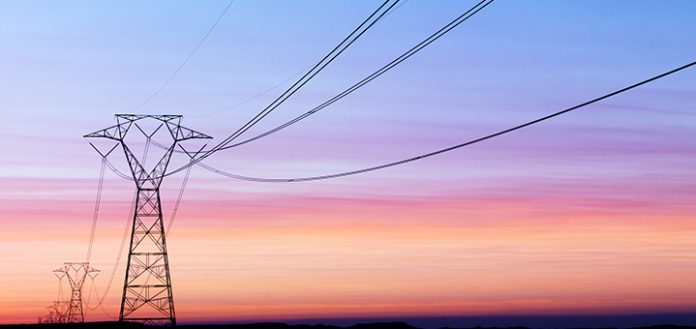This article has been written by Arpita Tripathy, pursuing BA LL.B (Business Honours) in KIIT School of Law. This is an exhaustive article which deals with Enron Power Project and Indian Law.
Table of Contents
Introduction
Enron was a mammoth, energy company, originated in the USA. In 2001 it filed for bankruptcy. This was the biggest bankruptcy in the history of the US. The company had it spread in different countries of the world, including India. The Enron Power Project in India led to a huge controversy because of allegations against it for human rights violations and corruption.
The Enron Power Project
Background
After Independence, India followed a socialistic pattern. Mahatma Gandhi’s idea of a ‘swadeshi’ country was the main reason behind such a pattern. This meant that the major sectors like the electricity sector should be self-reliant and should maintain themselves. Therefore, privatization in the sector was not allowed and the public sector was hugely promoted. Further, the power industry was slow-moving because of which many States did not have a proper power supply. The need for power was much more than the capacity to provide it. This shortage of power supply never allowed India to progress in the Industrial sector.
In the early 1990s, there was an economic crisis because of which the government under Prime Minister Narshima Rao along with Finance Minister Dr. Manmohan Singh, had to open up the power sector and promote liberalization. The intention behind opening up the market was to bring foreign investment to India. Many foreign companies invested in India. Enron made the highest Foreign Direct Investment in India. It was ready to set up its $3 billion power plant after being invited by the Indian Government.
The Deal
Enron invested in India when no other foreign company was interested to do so. It has also been claimed that Enron was being advised not to invest in India because the sector of energy was controlled by the Government. But, Enron invested highly in India. They chose Maharashtra, the third-largest state in India to be their centre. In June 1992, a team from Enron visited Maharashtra and after examining many sites, they decided to set up their plant in Dabhol. Dabhol Power Corporation (a joint venture of Enron, General Electric, and Bechtel Corporation) was thus set up in India. The construction began in 1992 and was completed in 1999. The construction and operation of the Dabhol Power Company have been controversial since the very beginning.
For the successful operation of this project, the Power Purchase Agreement (PPA) was entered into by Maharashtra State Electricity Board (MSEB) and Dabhol Power Company on 8th December, 1993. The PPA is an instrument that creates a legal obligation on both parties to perform their agreed terms. The PPA specified that the Maharashtra State Electricity Board will buy power from Dabhol Power Company for 20 years. The PPA also stated that all the contracts during the construction would be approved by MSEB. However, MSEB could only object if there is an economic or safety concern that might get affected. The argument that was presented by Enron in its favour was that it agreed to pay penalties in case of default in not complying with the agreed work on time. A huge amount of liquified Natural Gas was needed for the functioning of the power plant. Therefore, it was decided that the natural gas would be transported from the joint venture which Enron had in Qatar.
The deal between MSEB and Dabhol Power Company was questioned and was opposed because the deal was finalized only within 5 days. Allegations were made by the media and the opposition party against the deal for being non-transparent. It was also alleged that there were many irregularities in the deal, issues were raised for environmental concerns, corruption, and favouritism.
Request for funding from the World Bank
India and Enron approached the World Bank for funding which was required to be paid to Enron for the project. The World Bank on request of India reviewed the deal. It observed that the whole deal was one-sided and was only in favour of Enron and not in favour of India. It further criticised the deal by indicating that the deal is not economically viable for India. The Maharashtra State Electricity Board had to pay the company within 60 days, however, Dabhol was not liable to provide any limit of electricity. The result of the deal would be that the country would have to pay Dabhol with or without a supply of electricity. The World Bank rejected the request for funding for the project.
Examination by CEA
The Memorandum of Understanding (MoU) was to be examined by the Central Electricity Authority (CEA). The parameters of cost, location, implications of the project were to be looked into by it. But the MoU was signed before being examined on the parameters. Central Electricity Authority examined the Memorandum of Understanding between Enron and Maharashtra State Electricity Board. The CEA said that clauses that are necessary according to the present norms of the Government of India are absent in MoU. The price which was agreed between the two parties was also not according to the existing norms of the Government. No, where it has been stated from when the 20 years contract will begin. The CEA also concluded that the whole project is only favourable to Enron and is one-sided. It was also indicated by the CEA that there might be a corrupt interest between the officials of MSEB and Enron.
Changes suggested by Enron
Enron sought amendments in the Electricity Supply Act, 1948 because it did not want to work on the prices fixed by the Government. Enron for its benefits started pointing out problems in the Indian Law. For this, Enron appointed a US-based law firm, so that it could suggest the changes beneficial to the company. Enron submitted a report with figures and graphs to the Secretary of Power to suggest changes.
Enron was ready to indicate the problems in the Act only when the Government of India asked Enron to produce a break-up of costs and return on equity. It did not want to lower the cost according to the norms of the Government because it was too low than the cost of power generation. Enron did not want the Government to scrutinize their work and did not want to make the whole process public. Enron also had a problem with the fact that it had to comply with the Companies Act, 1956 like any other private company. Enron also wanted to move ahead with the project without clearance of the techno-economic aspect from CEA.
The chairman of MSEB said that government interference will not be accepted by Dabhol Power Company. It was shocking for the country to see Maharashtra State Electricity Board agreeing with the terms of Enron and suggesting the Government to act on it. This was a clear indication of corruption by MSBE officials.
Enron’s impact on common people and environmental concerns
For this power project to be successful appropriate land was required. Therefore the power project was ready to displace thousands of people 2000 people directly and 92 thousand indirectly) from 8 different villages. These people were dependent on the natural resources of the area. The consultants employed by Enron suggested that the further expansion of the project by acquiring land would affect the natural resources and the lives of the people residing in the area. The project was also being opposed as it would also cause economic disruption for the native people. Therefore, a meeting was set up between the State Government and Enron. In the meeting, it was decided that Enron will invite queries and complaints regarding the setting up of the plant. In pursuance of this, Enron published a newspaper article where it invited complaints and queries. Even though the company received many complaints from NGOs, even then on the expiry of two months, the company bluntly lied. It moved forward with setting up a power plant based on the lie. This would not have been possible without the corrupt practices of MSEB officials.
There was a lot of opposition from the locals not only based on land acquisition but they were afraid that this place might turn into another Bhopal story. They did not want environmental degradation in the area and were afraid to watch their native places turn into chemical zones. There were concerns that the harmful chemicals from the Dabhol Power Company will not only affect the lives of the people but it will also adversely affect the horticulture of the area. The process of dealing, the land acquisition, and the environmental concerns made the locals protest against this project. There were reports of people being harassed if they participated in the protests.
Enron and the Maharashtra State Electricity Board said that the project would not at all damage the environment. They would create a green zone around the Power Plant to minimize pollution. They further said, natural gas would create the least pollution and won’t be harmful to the area. Enron submitted a report stating the impact on the environment and submitted it to the Government of India.
However, Enron omitted the fact that the first phase of the plant would use oil and not natural gas. It did not also reveal that natural gas is not pollution-free, it produces less pollution but it would still create thermal and chemical pollution. The thermal release in the estuary would also disrupt marine lives.
Further, the report of Environmental Impact Assessment (EIA) which makes an assessment and honestly drafts a report on the situation, submits it to the Government for approval. The Government looks to examine the report and approve it. However, here the report of the EIA is not made public and it was also kept hidden from people being affected by the project.
Issues regarding Competitive Bidding and Corruption
One of the biggest advantages that Enron received while entering India was that the setting up of the power plant was promised to be fast-tracked. Officials in India went to talk about setting up the power plant. In June 1992 they visited Delhi to discuss the proposal. They went ahead to Maharashtra for inspection of sites and chose Dabhol as their location. Soon after MoU was signed between the Government of Maharashtra and Enron.
This fast track agreement was signed by avoiding competitive bidding. This transaction was not transparent as well. There were allegations against the Government for keeping all the documents secret. The Government, however, made a lame excuse that the working and transaction of Enron was so complex that competitive bidding was not possible. It was also added that for the privacy of Enron, secrecy was important. But it was argued that the deal should have been made public because it had serious implications on local people.
Enron’s violation of human rights
When people protested peacefully against the project they were harassed by the officials. Violence was used to stop all kinds of democratic protests surrounding the project. Women and children were also arrested on account of peaceful protests. Their main targets were women and children. In one instance, 26 women were arrested. The officials were violating human rights and constitutional rights by hiding behind the excuse of maintaining law and order. The police were always employed on the construction site and they did not leave any chance of hurting and beating a completely peaceful protest.
Enron always made a reputation and asked US-based organizations to stay away from human rights violations. However, Enron decided to violate the same in India. Police conducted raids in villages illegally and harassed them. The water supply was also diverted from the village.
Amnesty International showed concerns about the continuous violation of Human Rights. They called up the Government of India and the Government of Maharashtra to see that the freedom of speech and expression is being complied with. The organization also asked for proper investigation and the culprits should be strictly punished.
Conclusion
No doubt Enron Power Project came here to recolonize the power supply of India. It was also a milestone towards the liberalization of the market. However, the company not only took a huge sum of money but did not comply with the already existing laws. A foreign company after coming to India and demanding changes in laws in its favour is no justice. There were constant violations of the very basic human right of speech and expression. The company came up without following the necessary process. The project was also not approved by the World Bank.
References
- https://www.researchgate.net/publication/247834705_Enron’s_Dabhol_power_project_in_India
- http://www.infraline.com/(S(l5zp5uze5d4d25453vrmpg55))/power/ipp/Maharashtra/dabhol/ReportDabholDisputePowerProject.aspx
- http://www.prayaspune.org/peg/media/k2/attachments/enron_story_007A01.pdf
- https://www.hrw.org/reports/1999/enron/enron3-0.htm
- https://www.negotiations.com/case/negotiation-project-india/
LawSikho has created a telegram group for exchanging legal knowledge, referrals and various opportunities. You can click on this link and join:
 Serato DJ Crack 2025Serato DJ PRO Crack
Serato DJ Crack 2025Serato DJ PRO Crack











 Allow notifications
Allow notifications



